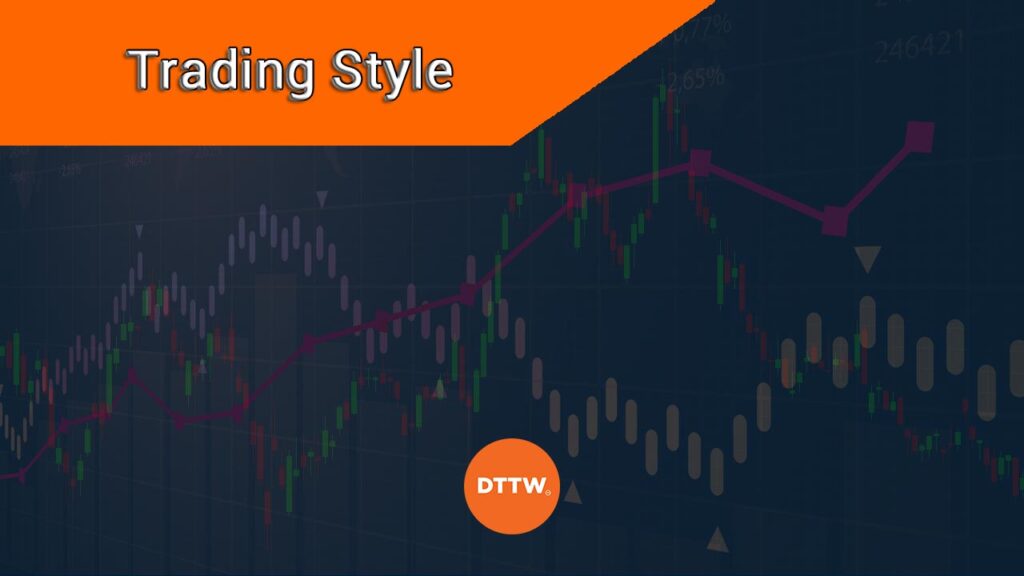If you want to earn more money in the stock market, it’s helpful to determine if you’re a certain kind of trade and your trading style. You have probably examined stock graphs and recognized upward or downward trends.
However, you may not come to the same conclusion if you look at a chart for a different time frame. A stock’s daily and monthly graphs can reveal entirely different trends.
Some short-term trading styles are swing trade, scalper and fade.
In this article, we will look at some of the most popular types of trading. Specifically, we will dig deeper into scalping, day trading, swing trading, position trading, and investing.
» Day Trading Versus Long-Term Investing «
Table of Contents
Trading Style – Short-Term Trading
Scalper
To discover what is your business trading style, think about the market time frame that you prioritize. If you try to make money by rapidly buying and selling different stocks, you might be a “scalper”. These traders pay attention to minor changes in value.
Scalper purchase stocks and resell them after very small price increases. They also use the “fade” technique. When stock values suddenly rise, they short sell securities that seem overvalued. This strategy benefits scalpers if other traders decide to make money by selling off a stock: its value falls and the short sale produces a profit.
» Related: When to scalp (and when it’s not good)
The problem with this method is that it involves considerable stress. Most jobs become stressful at times, but scalping puts you under heavy pressure throughout the day!
Scalpers mostly use price action to find entry and exit positions. Price action is the process of identifying patterns and predicting the next moves.
For example, if a stock is rising, you can buy the asset and profit as it rises. You can also use other reversal and continuation patterns to predict the direction of an asset.
Related » Which Chart Patterns Are Good for Scalping?
Day Traders
Day traders take a slightly more relaxed approach in their trading style quantum. If you closely watch the intraday stock charts and rarely hold shares for more than eight hours, you may fall into this category.
These traders usually make the most money when their stocks trend upward for several hours. They carefully monitor prices throughout the day.
Day traders mostly combine both fundamental, technical, and price action strategies to identify buying opportunities. They mostly use fundamental analysis with the goal of identifying periods of potential volatility. They then use technical and price action to identify points of entry and exit.
Some of the popular price action trading strategies are:
- Triangle
- Head and shoulders
- Bullish and bearish pennants
- Cup and handle patterns
Day trading has some advantages, including the fact that one can react to immediate news or events and that it avoids overnight risks. The main disadvantage is that it can be costly since you will be opening more trades per day.
Scalping is a form of day trading.
Trading style – Long-Term Trading
Swing Trader
Most stockholders fit the description of a “swing trader”. You may be among them if you normally keep stocks for two to 15 days at a time. Swing trader doesn’t try to earn dividends, but he or she has the patience to wait for gradual price increases.
Swing trading is a trading strategy where a trader buys or shorts a financial asset and holds it for a few days. Unlike scalping, swing traders rely more on the underlying fundamental and technical themes in the market like yield curves, earnings, and interest rate decisions.
For example, a swing trader will identify a financial asset that is rising and they will buy it with the goal of following the trend. Others will identify when there is a moving average crossover.
If it is bullish, they will buy the asset and hold it until signs of a bearish reversal emerge.
Swing trading can be highly profitable. However, it has some key risks that traders need to know about. First, it is a bit expensive since many brokers charge an interest known as swap for any trades held overnight. This is common in the forex trading industry.
Second, swing trading has overnight risks. These are risks that come up when you are asleep.
For example, if you are a forex trader, a country’s central bank could make a major announcement that moves the respective currency sharply. Therefore, if you had not set a stop loss, it is possible for you to lose a substantial amount of money overnight.
» Day Trading vs Swing Trading «
Position Trader
If you prefer to hold securities for several weeks or months, you could be a “position trader.” These shareholders set aside substantial amounts of money for investment purposes.
They plan ahead by analyzing monthly or yearly performance data.
Position traders devote relatively little time to buying, selling and watching specific stocks. This is a popular trading style.
Investor
The last major kind of trading style is an investor. If you fit in this category, you probably favor stocks that pay dividends. This means that you receive a small portion of the company’s profits.
You want your holdings to gain value, but it isn’t important if prices drop for a few days or weeks. Most investors possess enough funds to make a variety of large investments. They try to purchase stocks that will perform well for many years.
Although it requires patience and in-depth research, this strategy often reduces the financial risks of stock trading. It also involves comparatively little stress.
Make sure you pick the right day trading style!
Be carefull, trading forex is also a bit different than the other ones.
Other Useful Links about Trading Style
- Definition of Trading Style on Investopedia





